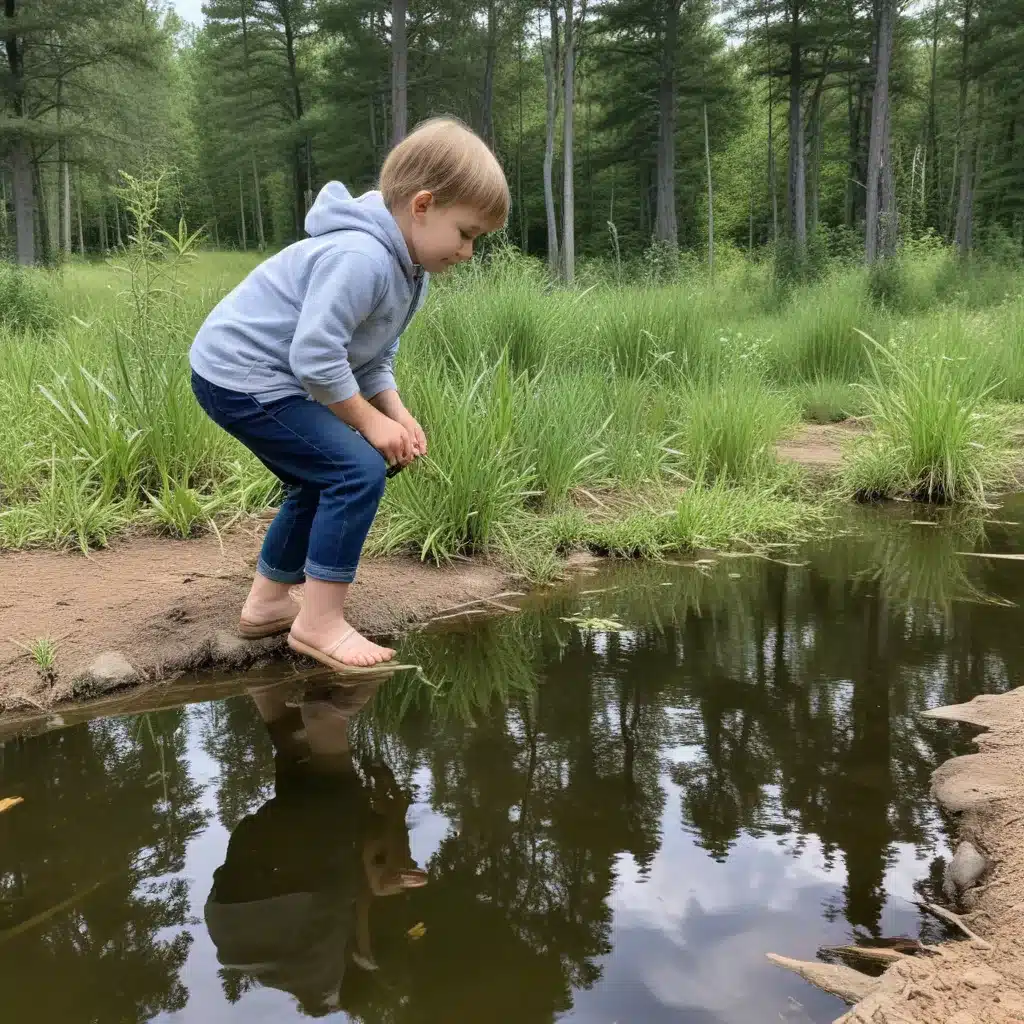
Exploring the Pond Life at Crooked Pines Farm
As you wander down the paths of Crooked Pines Farm, you’ll come across a hidden gem – our serene pond, teeming with diverse aquatic life. This tranquil oasis is more than just a picturesque feature; it’s a vibrant ecosystem that offers endless opportunities for exploration and learning.
Pond Characteristics
Our pond at Crooked Pines Farm is a relatively small, shallow body of water, measuring approximately 50 feet in diameter and reaching a maximum depth of 3 feet. Despite its modest size, the pond is fed by a natural spring, ensuring a constant supply of fresh, cool water. The substrate is primarily composed of a mix of silt, sand, and decomposing organic matter, creating an ideal habitat for a variety of aquatic organisms.
Periodic water quality testing reveals that our pond maintains a relatively stable pH, typically ranging between 6.5 and 7.5, and dissolved oxygen levels that support a thriving ecosystem. The water temperature fluctuates throughout the seasons, with cooler temperatures during the spring and fall, and warmer readings during the summer months.
Aquatic Flora
The pond’s surface is dotted with vibrant floating aquatic plants, such as water lilies and duckweed, which provide shade and cover for the underwater inhabitants. Along the shoreline, you’ll find an array of emergent vegetation, including cattails, water reeds, and sedges, their roots anchored in the shallow waters.
Beneath the surface, a diverse community of submerged aquatic plants flourishes, including pondweeds, water milfoil, and elodea. These underwater gardens not only serve as crucial habitat but also help maintain water quality by absorbing excess nutrients and providing oxygen through photosynthesis.
Diversity of Pond Life
Invertebrate Communities
The pond at Crooked Pines Farm is home to a rich tapestry of benthic macroinvertebrates, such as dragonfly larvae, caddisfly larvae, mayfly nymphs, and water striders. These tiny creatures play crucial roles in the pond’s food web, serving as both producers and consumers.
The water column is teeming with zooplankton, microscopic animals that feed on algae and bacteria, forming the foundation of the aquatic food chain. Observing these drifting organisms under a magnifying glass or microscope can reveal a hidden world of complexity and interconnectedness.
Vertebrate Inhabitants
Among the pond’s vertebrate inhabitants, you’ll find a variety of amphibians, including frogs and salamanders, which rely on the water for breeding and developing their young. Fish, such as bass, bluegill, and sunfish, dart through the water, hunting for prey and seeking refuge from predators.
The pond also attracts a diverse array of waterfowl, including ducks, geese, and even the occasional great blue heron, which wades in the shallows in search of a tasty meal. These feathered visitors not only add to the pond’s aesthetic appeal but also play a crucial role in its overall ecological balance.
Ecological Interactions
Trophic Relationships
The pond ecosystem at Crooked Pines Farm is a delicate web of producer-consumer relationships. Aquatic plants, both floating and submerged, act as primary producers, converting sunlight and nutrients into energy-rich organic compounds. These plants then serve as food sources for herbivorous zooplankton, macroinvertebrates, and even some fish.
The decomposer community, including bacteria, fungi, and detritivores like crayfish and aquatic worms, play a vital role in breaking down dead plant and animal matter, recycling nutrients back into the system.
The complex food web linking these various organisms ensures a healthy, balanced ecosystem, with each species playing a crucial role in maintaining the pond’s delicate equilibrium.
Habitat Utilization
The pond at Crooked Pines Farm provides a diverse array of habitats that cater to the unique niches and life-cycle requirements of its inhabitants. The shallow shoreline areas offer spawning grounds for amphibians and nursery areas for juvenile fish, while the deeper, open waters serve as feeding grounds and refugia from predators.
Throughout the seasons, the pond’s ecosystem experiences dynamic changes in species composition and community structure. For example, during the spring and fall, migratory waterfowl may visit the pond, taking advantage of the abundant food sources and resting areas before continuing their journeys. Understanding these seasonal patterns is crucial for effective management and conservation efforts.
Conservation and Management
Despite its idyllic appearance, the pond at Crooked Pines Farm faces various threats to its delicate balance, including the introduction of invasive species, the accumulation of pollutants and excess nutrients leading to eutrophication, and the gradual degradation of habitat quality.
To ensure the long-term health and sustainability of our pond ecosystem, we implement a range of sustainable management practices. This includes regular water quality monitoring, the use of integrated pest management techniques to control unwanted species, and the strategic enhancement of aquatic habitats through the introduction of native vegetation and the creation of diverse microhabitats.
By fostering a deeper understanding and appreciation for the intricate web of life within our pond, we hope to inspire visitors, particularly children, to become active stewards of the natural world. Through hands-on exploration, educational programs, and a commitment to conservation, we strive to cultivate a new generation of pond enthusiasts and environmental advocates.
So, the next time you visit Crooked Pines Farm, be sure to set aside some time to immerse yourself in the captivating world of our pond. Observe the diverse array of life, from the graceful dragonflies skimming the surface to the vibrant underwater landscapes. With a little curiosity and a keen eye, you’ll uncover the hidden marvels that make this tranquil oasis a true gem of our farm.


